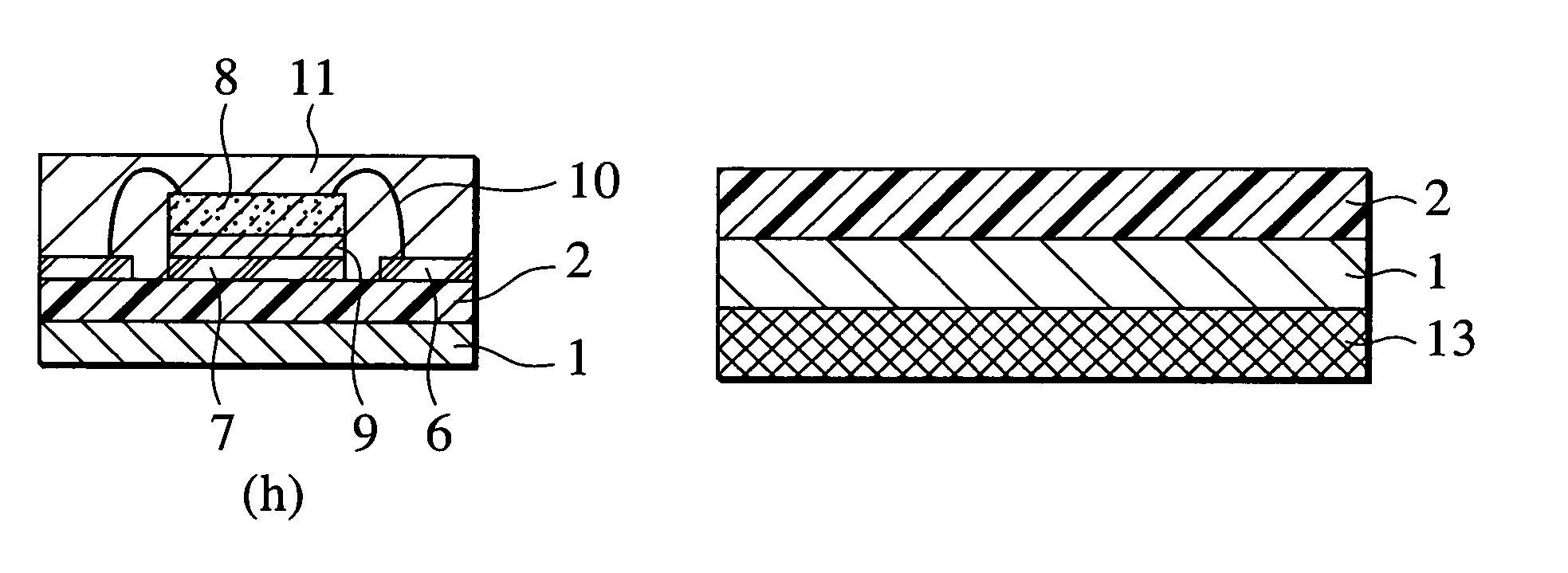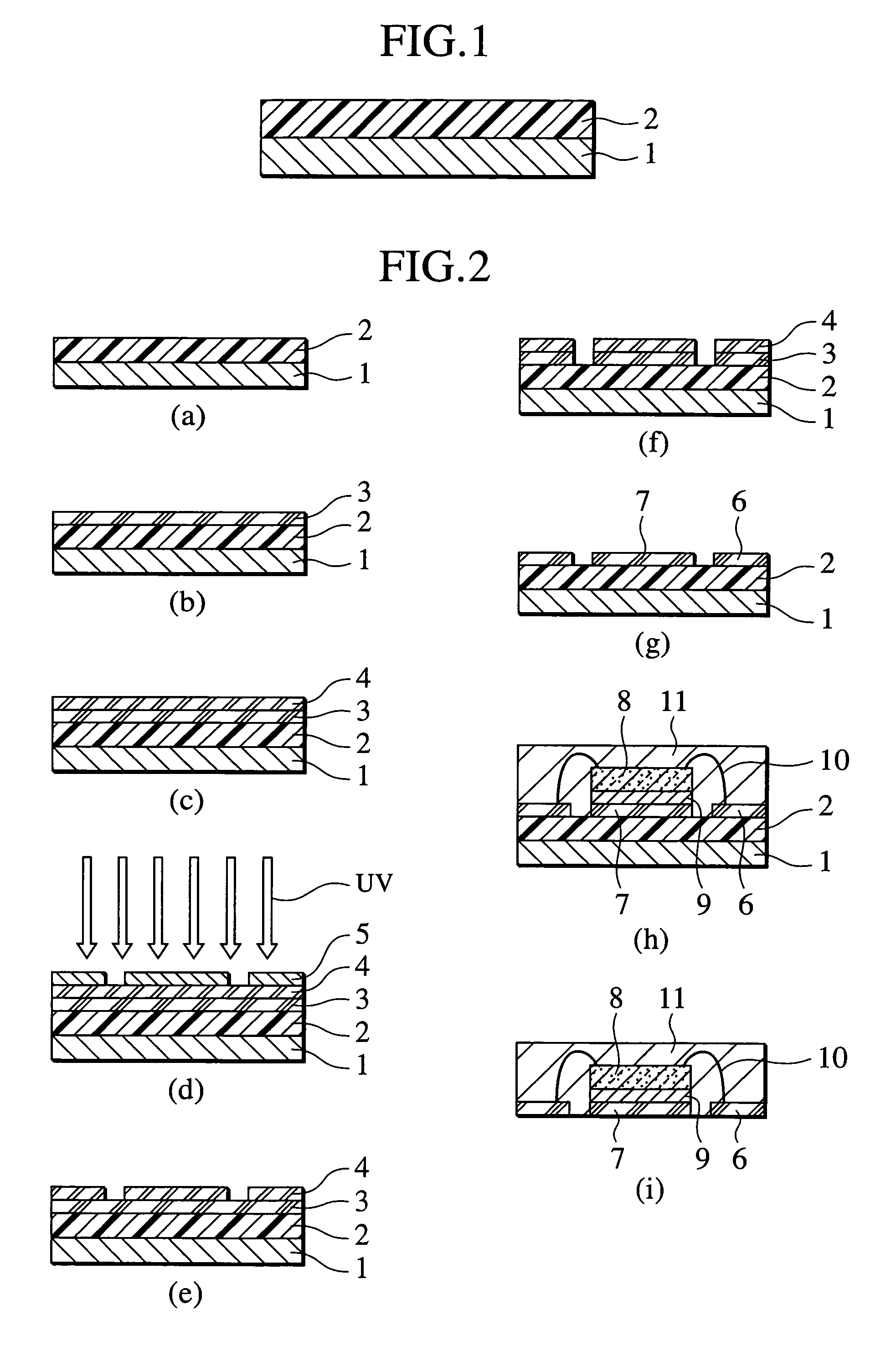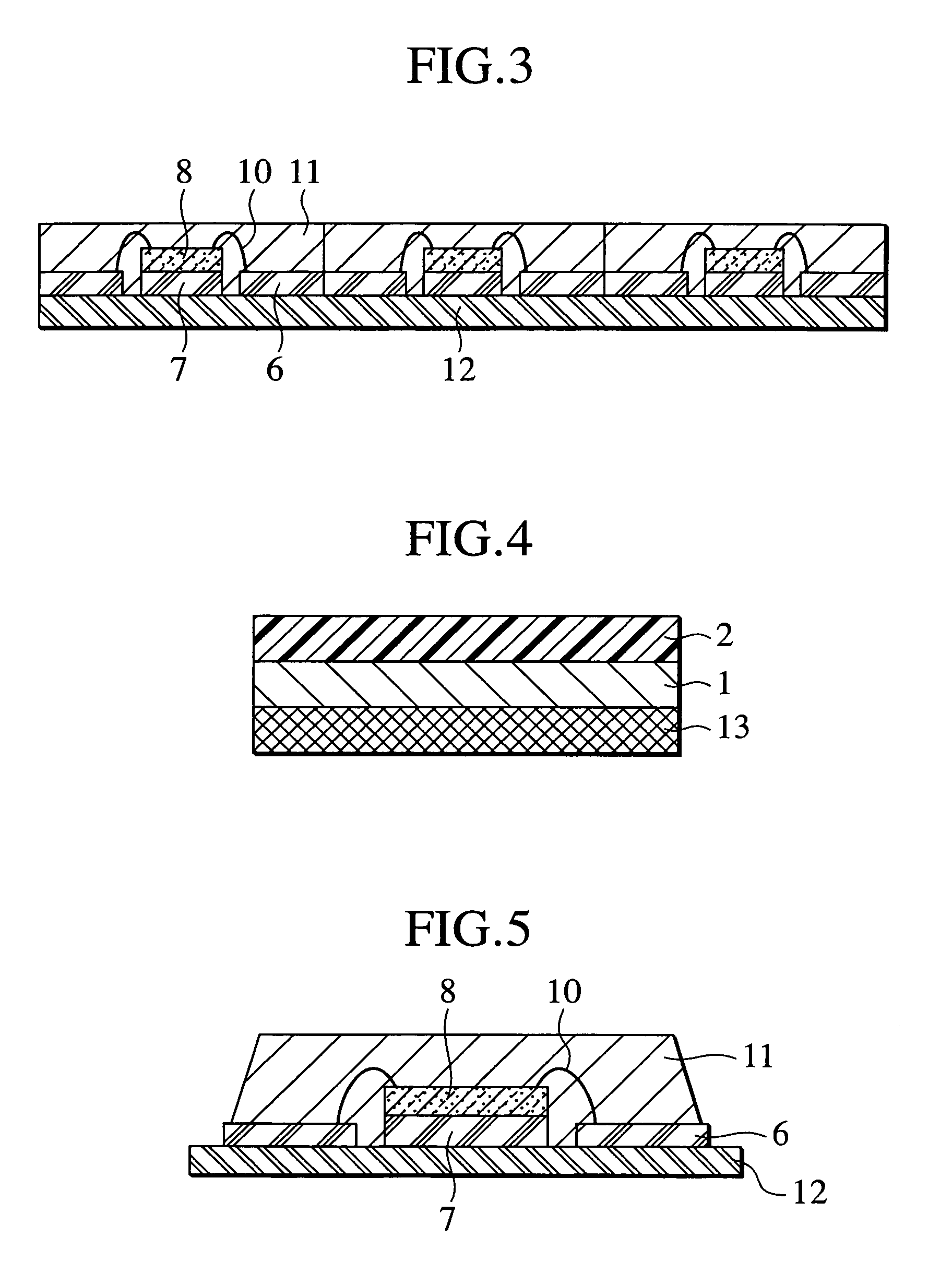Adhesive film for semiconductor, metal sheet with such adhesive film, wiring substrate with adhesive film, semiconductor device, and method for manufacturing semiconductor device
a technology for adhesive films and semiconductors, applied in semiconductor devices, semiconductor/solid-state device details, thin material processing, etc., can solve the problems of fine wiring not being formed and still high, and achieve the effect of sufficient adhesive strength and easy peeling
- Summary
- Abstract
- Description
- Claims
- Application Information
AI Technical Summary
Benefits of technology
Problems solved by technology
Method used
Image
Examples
production example 1
Production of Aromatic Polyetheramideimide Adhesive Varnish for Use in Examples 1 to 4, 7, and 8
[0102]A 5 L four-necked flask equipped with a thermometer, a stirrer, a nitrogen inlet, and a fractionating column was charged under an atmosphere of nitrogen with 258.3 g (0.63 mol) of 2,2-bis[4-(4-aminophenoxy)phenyl]propane and 10.4 g (0.042 mol) of 1,3-bis(3-aminopropyl)tetramethyldisiloxane, which were then dissolved in 1450 g of N-methyl-2-pyrrolidone. This solution was heated to 70° C., and 33.6 g (0.168 mol) of 1,12-diaminododecane was dissolved therein. This solution was then cooled to 0° C., and 180.4 g (0.857 mol) of trimellitic anhydride chloride was added thereto. When the trimellitic anhydride chloride dissolved, 130 g of triethylamine was added. Stirring was continued at room temperature for 2 hours, the mixture was then heated to 180° C., and a reaction was carried out for 5 hours so as to complete imidization. The reaction mixture thus obtained was poured into methanol so...
production example 2
Production of Aromatic Polyetheramideimide Adhesive Varnish for Use in Examples 5 and 6
[0103]A 5 L four-necked flask equipped with a thermometer, a stirrer, a nitrogen inlet, and a fractionating column was charged under an atmosphere of nitrogen with 258.6 g (0.63 mol) of 2,2-bis[4-(4-aminophenoxy)phenyl]propane and 67.0 g (0.27 mol) of 1,3-bis(3-aminopropyl)tetramethyldisiloxane, which were then dissolved in 1550 g of N-methyl-2-pyrrolidone. This solution was then cooled to 0° C., and 187.3 g (0.89 mol) of trimellitic anhydride chloride was added thereto at this temperature. When the trimellitic anhydride chloride dissolved, 100 g of triethylamine was added. Stirring was continued at room temperature for 2 hours, the mixture was then heated to 180° C., and a reaction was carried out for 5 hours so as to complete imidization. The reaction mixture thus obtained was poured into methanol so as to isolate a polymer. This polymer was dried and then dissolved in N-methyl-2-pyrrolidone, an...
production example 3
Production of Aromatic Polyetheramideimide Varnish for Use in Resin Layer B in Example 5
[0104]A 5 L four-necked flask equipped with a thermometer, a stirrer, a nitrogen inlet, and a fractionating column was charged under an atmosphere of nitrogen with 172.4 g (0.42 mol) of 2,2-bis[4-(4-aminophenoxy)phenyl]propane and 153.7 g (0.42 mol) of 4,4′-methylenebis(2,6-diisopropylaniline), which were then dissolved in 1550 g of N-methyl-2-pyrrolidone. This solution was then cooled to 0° C., and 174.7 g (0.83 mol) of trimellitic anhydride chloride was added thereto at this temperature. When the trimellitic anhydride chloride dissolved, 130 g of triethylamine was added. Stirring was continued at room temperature for 2 hours, the mixture was then heated to 180° C., and a reaction was carried out for 5 hours so as to complete imidization. The reaction mixture thus obtained was poured into methanol so as to isolate a polymer. This polymer was dried and then dissolved in N-methyl-2-pyrrolidone, an...
PUM
 Login to View More
Login to View More Abstract
Description
Claims
Application Information
 Login to View More
Login to View More - R&D
- Intellectual Property
- Life Sciences
- Materials
- Tech Scout
- Unparalleled Data Quality
- Higher Quality Content
- 60% Fewer Hallucinations
Browse by: Latest US Patents, China's latest patents, Technical Efficacy Thesaurus, Application Domain, Technology Topic, Popular Technical Reports.
© 2025 PatSnap. All rights reserved.Legal|Privacy policy|Modern Slavery Act Transparency Statement|Sitemap|About US| Contact US: help@patsnap.com



